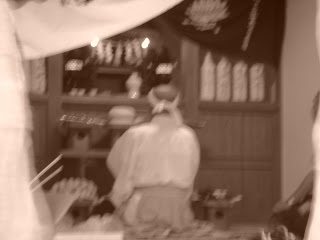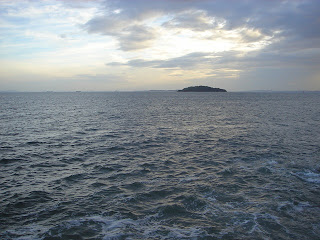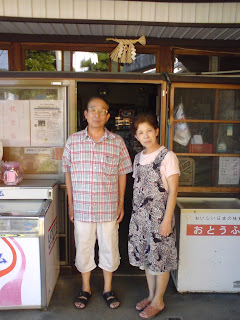Last weekend was the first weekend that I organised an official event, which was an open-air cinema night outside a lonely trainstation. A lonely trainstation that has suddenly become not so lonely, comme ça:

It was a great evening, although hot as hell, with many people enjoying the breeze(thank God) in the evening. Except of course, I was in a state:

What happened was that we had no budget whatsoever for lighting the stage, so I ended up having to hold the emergency lantern up for the duration of the evening. Ahaaaaaaa.

Annyway, the interesting happened the day after the success of this event;
When you walk up the hill up the road from this train station, you reach a path that leads you up to a shrine. The path is very steep and winding
and on top of the small mountain, there is a tiny, tiny shrine. Every year, on the first weekend of September, the locals go up this mountain, offer rice balls and sake to the gods of the mountain and thank for the protection. Everyone goes up, children from the age of 3, to grannies. It was such an amazing sight. It isn't even a festival. It is a tradition carried out from generation to generatin.



And I feel happy; because I don't need to protect this. They will take care of themselves and there is no worry.
At the end of it, everyone gets the 'leftovers' from the Gods; the offerings made to the Shrine are given to the people who visited to pray. OK I must say I didnt pray; but hey, I was there and I saw it happening in front of my eyes, and I sure was impressed.



 Well, this one represents a 'shishi' (wild lion) from the Kabuki character. But where's the kinkiness?
Well, this one represents a 'shishi' (wild lion) from the Kabuki character. But where's the kinkiness?














 Another good reason to come to Hazu, right???
Another good reason to come to Hazu, right???

























 7. Get your big bum soaked.
7. Get your big bum soaked.




